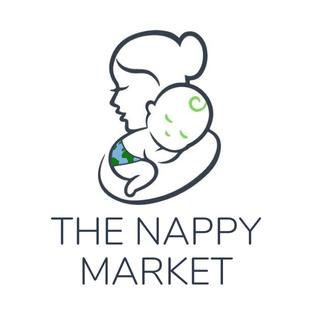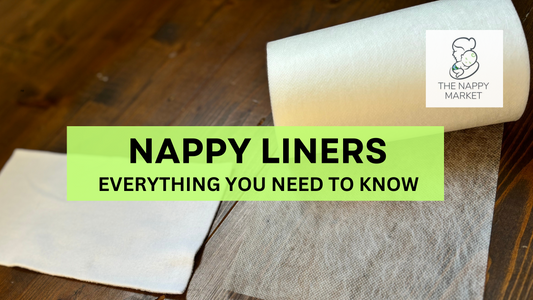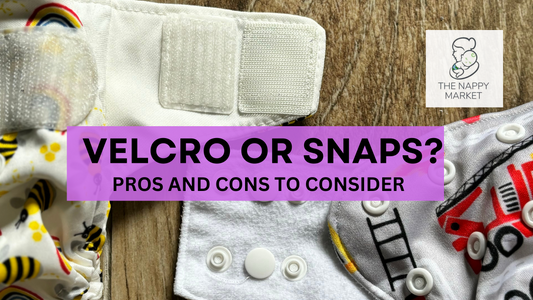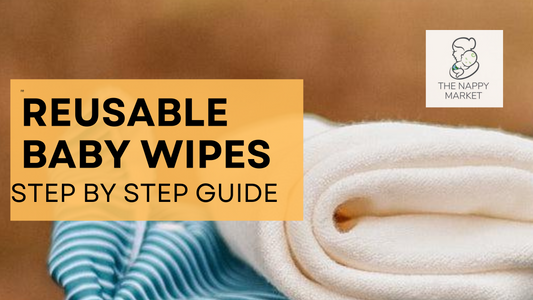Whether you use cloth or disposable nappies there is no avoiding the poo. But before you start using cloth nappies, you probably would like to know how to handle a nappy with poop.
Its actually really easy!
There are three different poop stages and three different ways of handling them with reusable nappies:
1) Milk poop (when the baby is only consuming milk) from newborn up to point you begin weaning.
2) Transitional poop (the phase in between milk poop and solid poop) - usually last 4-5 months.
3) Solid poop (when the baby is eating solid food) usually from 9 months +
Before babies start solid food (first 4-6 months) baby poo is water soluble so it will wash away in the machine. This is the easiest stage.
After baby starts solid food, poo should be removed before putting the nappy into the wash. You can use a disposable paper liner to catch poo and simply remove it and put the liner and the poo into the bin. Generally you can tell when a solid movement is about to happen and have the nappy open ready for a smooth extraction!
1) MILK POOP (0-6 MONTHS)
When you have a baby that is not yet eating solid food, it is really easy to handle poop! This is because you don’t need to remove the poop (it is water-soluble during this stage) from the diaper before washing.
The dirty nappies with milk poop, come straight off the baby and are stored in the pail liner or wetbag until they are going to be washed. The pail liner/wetbag makes it easy for you to transport the dirty nappies to the washing machine, where you simply place everything in the machine and press the start button. Put the open neck of the wet bag inside the door of the washing machine and push the nappies into the machine from the bottom of the bag - no need to touch anything with your hands.
Run a rinse wash, which will rinse the milk poop away, and then wash at 60°c. Poop gone! (See this article for our full Guide on Washing Cloth Nappies)
2) TRANSITIONAL POOP (6 MONTHS – ?)
The transitional poop stage is the most difficult because the poop has to be removed before the nappy is washed. Why is this so? Because transitional poop is not water-soluble. The good news is, babies eat very little at stage and generally only poop every 3-4 days.
The poop can be removed in several ways. For example, you can hold the diaper with poop down in the toilet and then flush the toilet, or you can use the shower handle to rinse the diaper. You can also removed the poop with toilet paper.
(See our full Guide on How to Remove Poop Here)
Subsequently the diaper is washed.
Also, at this stage we would suggest using liners or fleece liners. Its unlikely to catch all of the poop but it will certainly catch some.
3) SOLID POOP
When your child starts eating solid food naturally the composition of the poop will also change into a more solid structure. How to handle this? If you have managed the transitional poop phase, then this is much easier. Most of the time you will be able to “tip” the poop into in the toilet, its just like adult poop but smaller.
DIAPER LINER OR FLEECE LINER?
At first glance the handling of poop in a cloth diaper can seem rather troublesome but it can become a lot easier than you might think, especially if you use liners or fleece liners. Both have the advantage of “catching” the poop, thereby making it much easier to remove.
A disposable liner is simply thrown into the garbage bin together with the poop, whereas a fleece liner can be washed and used again and again.
Fleece liners
A fleece liner on the top of the diaper catches the poop while simultaneously giving a dry feeling towards the skin.
As said above, the fleece liner is easy to take out of the diaper and hold down into the toilet while you flush. It is also easy to rinse with the shower handle. The poop is easier to remove from the fleece liner because it is made of a material (polyester fleece) which does not absorb liquid.
So, the fleece liner can be washed together with the cloth diapers and used again. A convenient choice!
Disposable bamboo liners
The liner (e.g., bamboo paper) is put on the top of the diaper and when poop has “arrived”, it is thrown into the garbage bin (not the toilet).
Managing poop is simple, and much less "icky" than you might think!

Ready to get started - See our starter Bundles here.




